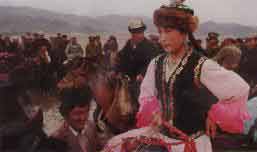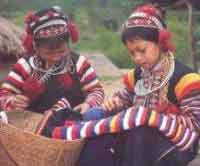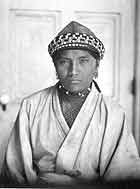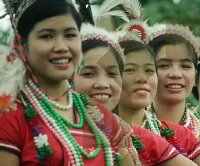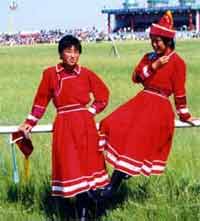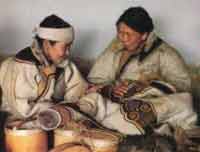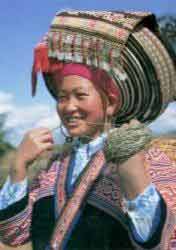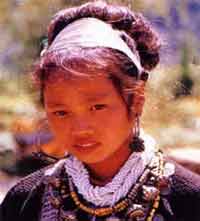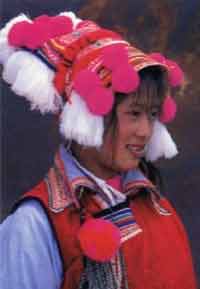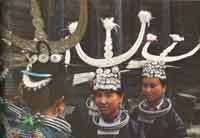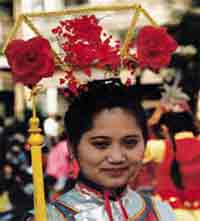 |
Chinese
Nationalities
|
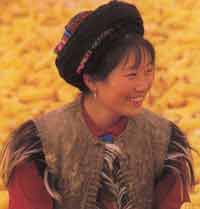 |
|||||||||||||||||||||||||||||||||||||||||||||||||||||||||||||||||||||||||||||||||||||||||||||||||||||||||||||||||||||||||||||||||||
Indigenous peoples of Tibet |
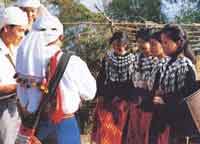 |
||||||||||||||||||||||||||||||||||||||||||||||||||||||||||||||||||||||||||||||||||||||||||||||||||||||||||||||||||||||||||||||||||||
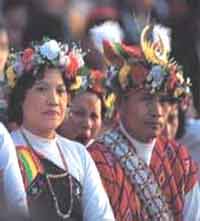 |
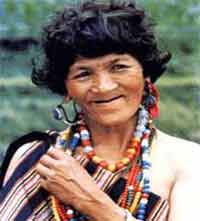 |
||||||||||||||||||||||||||||||||||||||||||||||||||||||||||||||||||||||||||||||||||||||||||||||||||||||||||||||||||||||||||||||||||||
| |
|||||||||||||||||||||||||||||||||||||||||||||||||||||||||||||||||||||||||||||||||||||||||||||||||||||||||||||||||||||||||||||||||||||
| No one knows exactly where the Chinese came from or who they are. It is believed that the humanoid - human-like creatures - appeared about two and half million years ago and that the humans as we know today, homo sapiens sapiens, came into being some 35,000 years ago. Although the oldest known writings - written language - date back only 5,000 years at best, we can 'read' our history by studying fossils, our DNA, geological data, cosmological data, our language, and so on, and from these records, we can determine the origin, or rather the prehistoric history, of the Chinese race, the 'White-clad People' (called "Dong-yi" -- the eastern barbarians, 濊貊族 by Chinese historians).
Ancient Chinese had different terms for barbarians in four directions.
Dongyi or Yi-of-the-East will be designations for people in the east,
i.e., the offsprings from the two clans of Tai-hao-shi and Shao-hao-shi.
The term meant for different people during different stages of history.
Though, legendary overlords of China, like Yandi (Fiery Lord) and Huangdi
(Yellow Lord, r. bc 2697-2599 ?), might be both born near Qufu of Shandong
Province in the east, and Lord Yandi, Lord Huangdi and Lord Zhuanxu
were recorded to have treated Qufu of Shandong as the capital. Sima
Qian's "Shi Ji" mentioned that Huangdi (Yellow Lord), in the
east, climbed Mount Wan-shan (i.e., Fan-shan in today's Langya, Shandong
Peninsula). Among the ancient eight Chinese overlords, clearly seven
belonged to the same old family. The lineage of Yandi (Shen-nong), Huangdi,
Shaohao, Gaoyang (Lord Zhuanxu), Gaoxin (Diku), Tangyao (Lord Yao),
and Yushun (Lord Shun) is spelled out in prehistory section. Even barbarians
could be traced to the same family as Chinese founders. Kong An'guo
of Han Dynasty claimed that among the four evil tribes exiled by Lord
Yao, Hundun were infilial descendants of Huangdi the Yellow Lord; Gun
was infilial son of Lord Zhuanxu; the 'Sanmiao' (Qiangic) people were
said to be infilial descendants of Yandi the Fiery Lord. |
|||||||||||||||||||||||||||||||||||||||||||||||||||||||||||||||||||||||||||||||||||||||||||||||||||||||||||||||||||||||||||||||||||||
Achang
|
50+ Indigenous Groups 7% of
population
|
Salar |
|||||||||||||||||||||||||||||||||||||||||||||||||||||||||||||||||||||||||||||||||||||||||||||||||||||||||||||||||||||||||||||||||||
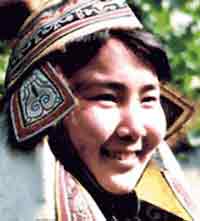 |
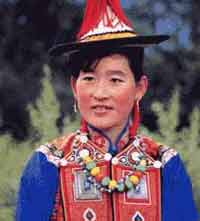 |
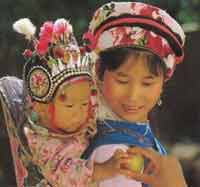 |
|||||||||||||||||||||||||||||||||||||||||||||||||||||||||||||||||||||||||||||||||||||||||||||||||||||||||||||||||||||||||||||||||||
| In ancient Chinese records, the name of Choson (Chao-xian) had appeared in almost all dynastic chronicles. There are two books that are worthy of special attention: "Shan Hai Jing" and "Huai Nan Zi". "Shan Hai Jing", namely, the Book or Classics of Mountains and Seas, recorded most of the myths and legends of ancient China, and this book, said to have been devised by Lord Yu, strangely, had the stories and accounts of lands as far as Europe and the Americas. Korea or Choson, as a springboard for accessing Sakhalin, the Bering Straits, Aleutian Islands and Japan, land and sea, is usually first mentioned. | |||||||||||||||||||||||||||||||||||||||||||||||||||||||||||||||||||||||||||||||||||||||||||||||||||||||||||||||||||||||||||||||||||||
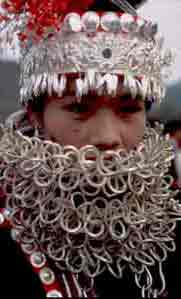 |
|||||||||||||||||||||||||||||||||||||||||||||||||||||||||||||||||||||||||||||||||||||||||||||||||||||||||||||||||||||||||||||||||||||
Two terms, Miao and Hmong, are both currently used to refer to one of the aboriginal peoples of China. They live mainly in southern China, in the provinces of Guizhou, Hunan, Yunnan, Sichuan, Guangxi and Hubei. According to the 1989 census, their number in China was estimated to be about 7 million. Outside China they live in Thailand, Laos, Vietnam and Burma, due to migrations starting in the 18th century, and also in the United States, French Guyana and Australia, as a result of recent migrations in the aftermath of the Indochinese wars. Altogether there are approximately 8 million speakers of the language. This language, which consists of 30-40 mutually unintelligible dialects, belongs, together with the Bunu language, to the Miao branch of the Miao-Yao (Hmong-Mien) language family. |
|||||||||||||||||||||||||||||||||||||||||||||||||||||||||||||||||||||||||||||||||||||||||||||||||||||||||||||||||||||||||||||||||||||
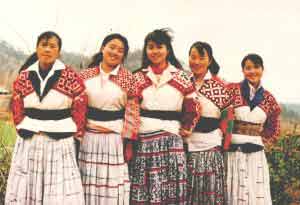 |
 |
||||||||||||||||||||||||||||||||||||||||||||||||||||||||||||||||||||||||||||||||||||||||||||||||||||||||||||||||||||||||||||||||||||
| With
a population of more than seven million, the Miao
people form one of the largest ethnic minorities in southwest China.
They are mainly distributed across Guizhou, Yunnan, Hunan and Sichuan
provinces and Guangxi Zhuang Autonomous Region, and a small number live
on Hainan Island in Guangdong Province and in southwest Hubei Province.
Most of them live in tightly-knit communities, with a few living in areas
inhabited by several other ethnic groups. |
|||||||||||||||||||||||||||||||||||||||||||||||||||||||||||||||||||||||||||||||||||||||||||||||||||||||||||||||||||||||||||||||||||||
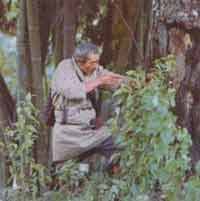 |
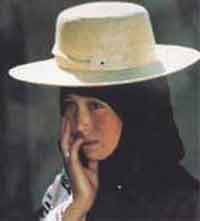 |
|
|||||||||||||||||||||||||||||||||||||||||||||||||||||||||||||||||||||||||||||||||||||||||||||||||||||||||||||||||||||||||||||||||||
Early Chinese literature was heavily influenced by Shamanism, Buddhism and Confucianism. The early literature, which began as an oral tradition, depicted a love of nature and man and held that man was a part of nature. Good was rewarded and evil was punished and values like loyalty to the King, filial piety, respect for one's elders, true friendship and chastity were emphasized. |
|||||||||||||||||||||||||||||||||||||||||||||||||||||||||||||||||||||||||||||||||||||||||||||||||||||||||||||||||||||||||||||||||||||
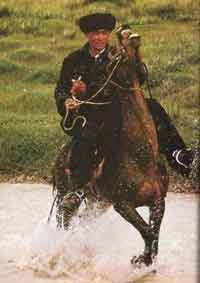 |
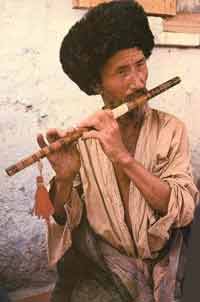 |
||||||||||||||||||||||||||||||||||||||||||||||||||||||||||||||||||||||||||||||||||||||||||||||||||||||||||||||||||||||||||||||||||||
The Chinese are classified as the Mongoloid (the 'yellow' race) along with Korean, Japanese, Native Americans, Mongols, Eskimos, and so on. The Yellow race makes up 33% of the world population. The Caucasoid (the "white" race), including the Australian aborigines, Arabs, Indians, Polynesians, and so on, accounts for 59% of the world population, while the Negroid (the 'black' race) accounts for only 8%. It is believed the Negroid and Caucasoid are more closely related than the Mongoloid, which gave rise to the regionalism hypothesis whereby the Mongoloid has evolved from homo erectus while the Negroid and the Caucasoid have evolved from a common ancestor homo antecessor. Ancient Chinese had different terms for barbarians in four directions. Dongyi or Yi-of-the-East will be designations for people in the east, i.e., the offsprings from the two clans of Tai-hao-shi and Shao-hao-shi. The term meant for different people during different stages of history. Though, legendary overlords of China, like Yandi (Fiery Lord) and Huangdi (Yellow Lord, r. bc 2697-2599), might be both born near Qufu of Shandong Province in the east, and Lord Yandi, Lord Huangdi and Lord Zhuanxu were recorded to have treated Qufu of Shandong as the capital. Sima Qian's "Shi Ji" mentioned that Huangdi (Yellow Lord), in the east, climbed Mount Wan-shan (i.e., Fan-shan in today's Langya, Shandong Peninsula). Among the ancient eight Chinese overlords, clearly seven belonged to the same old family. The lineage of Yandi (Shen-nong), Huangdi, Shaohao, Gaoyang (Lord Zhuanxu), Gaoxin (Diku), Tangyao (Lord Yao), and Yushun (Lord Shun) is spelled out in prehistory section. Even barbarians could be traced to the same family as Chinese founders. Kong An'guo of Han Dynasty claimed that among the four evil tribes exiled by Lord Yao, Hundun were infilial descendants of Huangdi the Yellow Lord; Gun was infilial son of Lord Zhuanxu; the 'Sanmiao' (Qiangic) people were said to be infilial descendants of Yandi the Fiery Lord. |
|||||||||||||||||||||||||||||||||||||||||||||||||||||||||||||||||||||||||||||||||||||||||||||||||||||||||||||||||||||||||||||||||||||
Compiled
by: Glenn Welker
